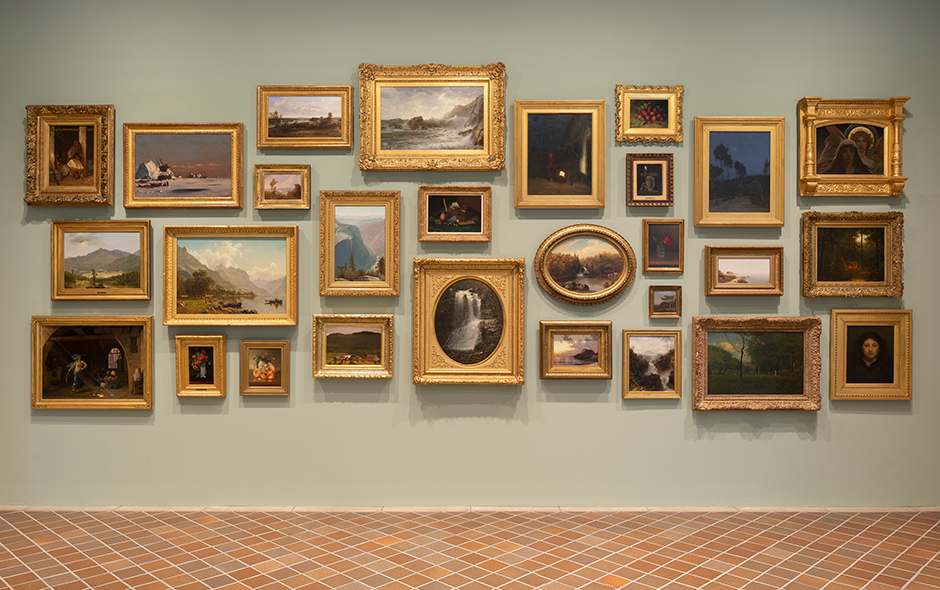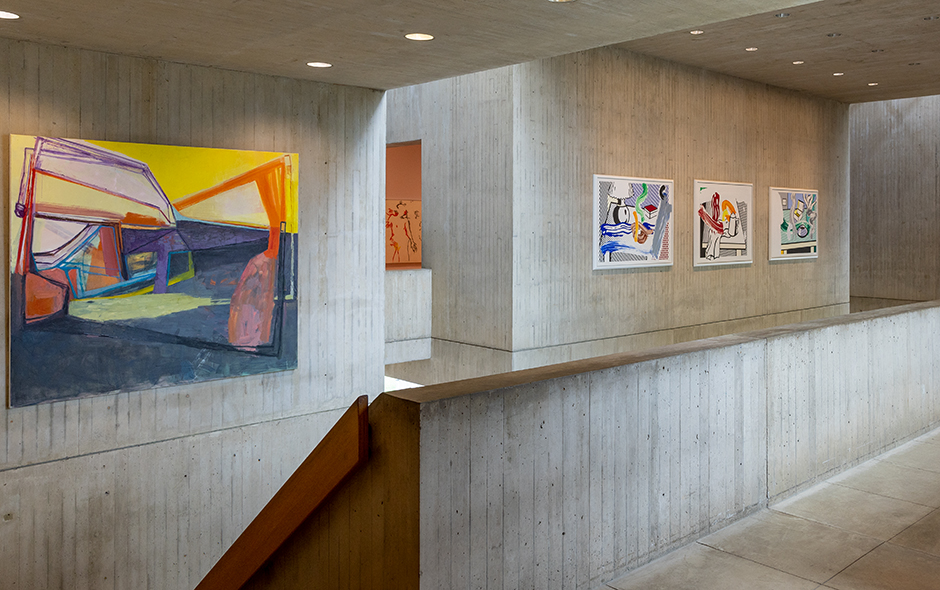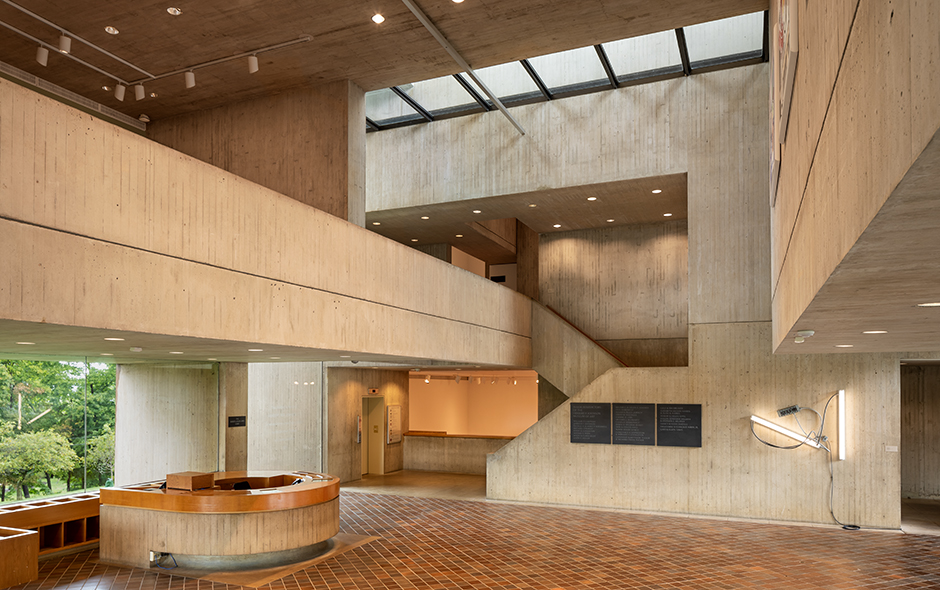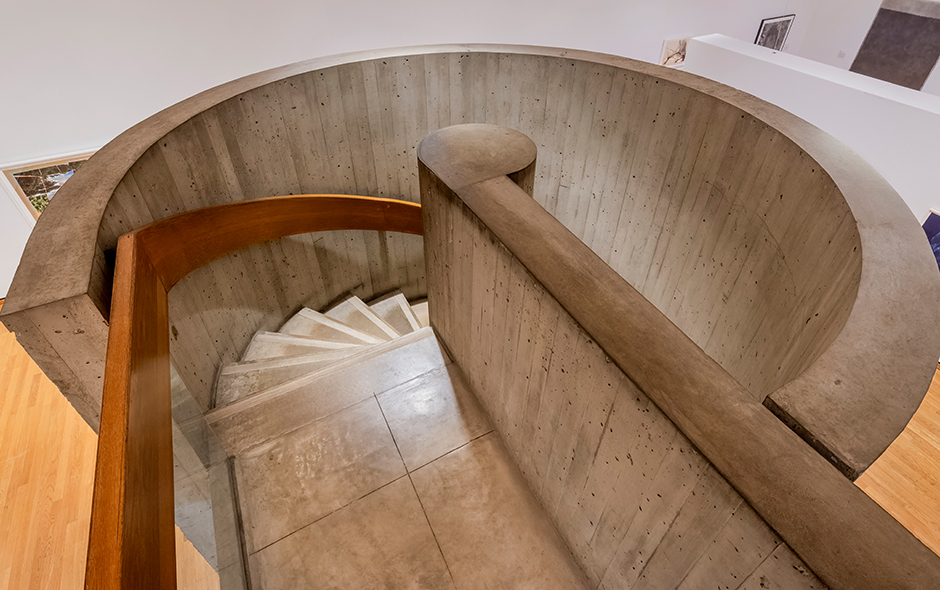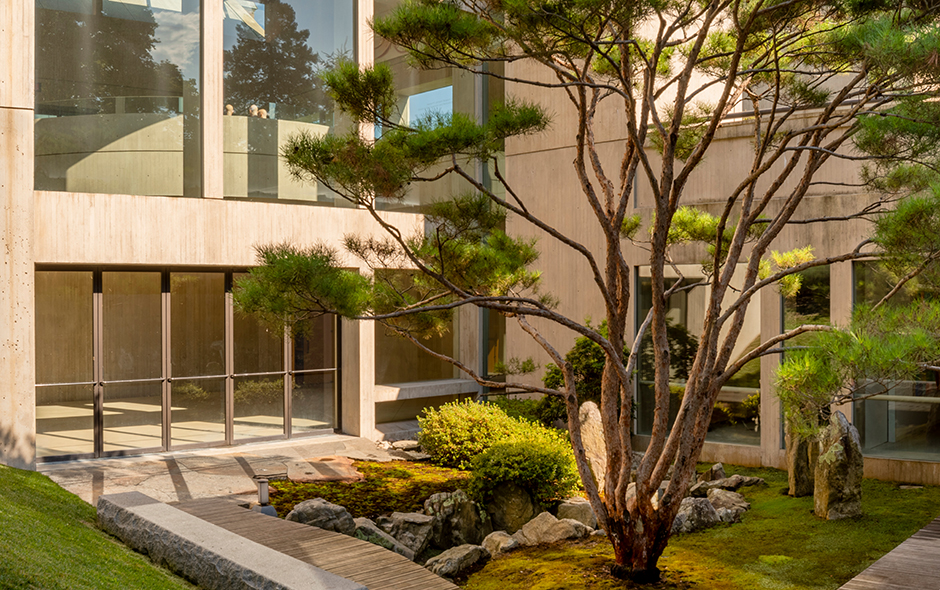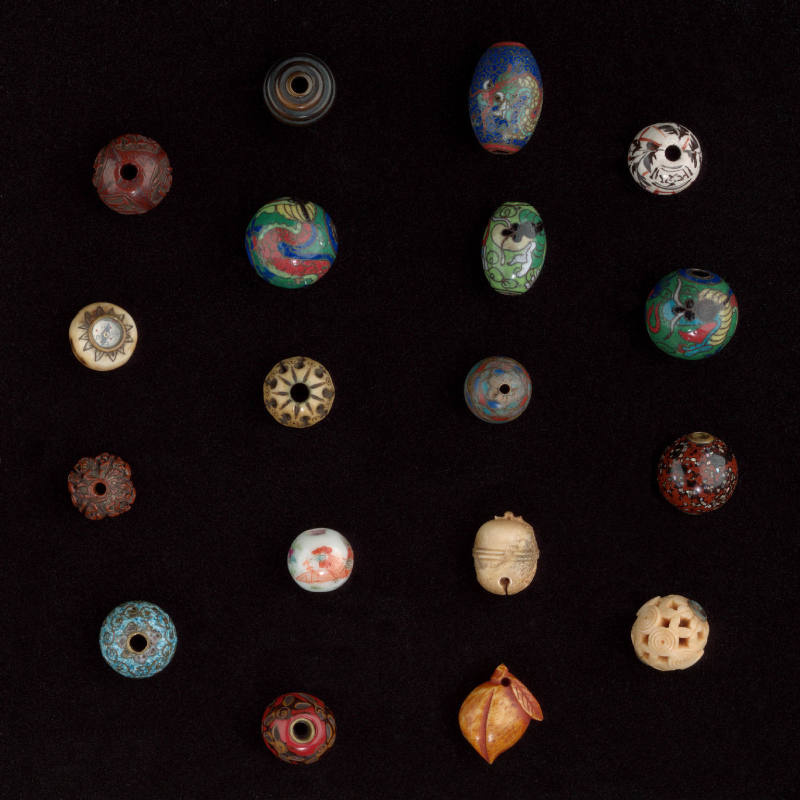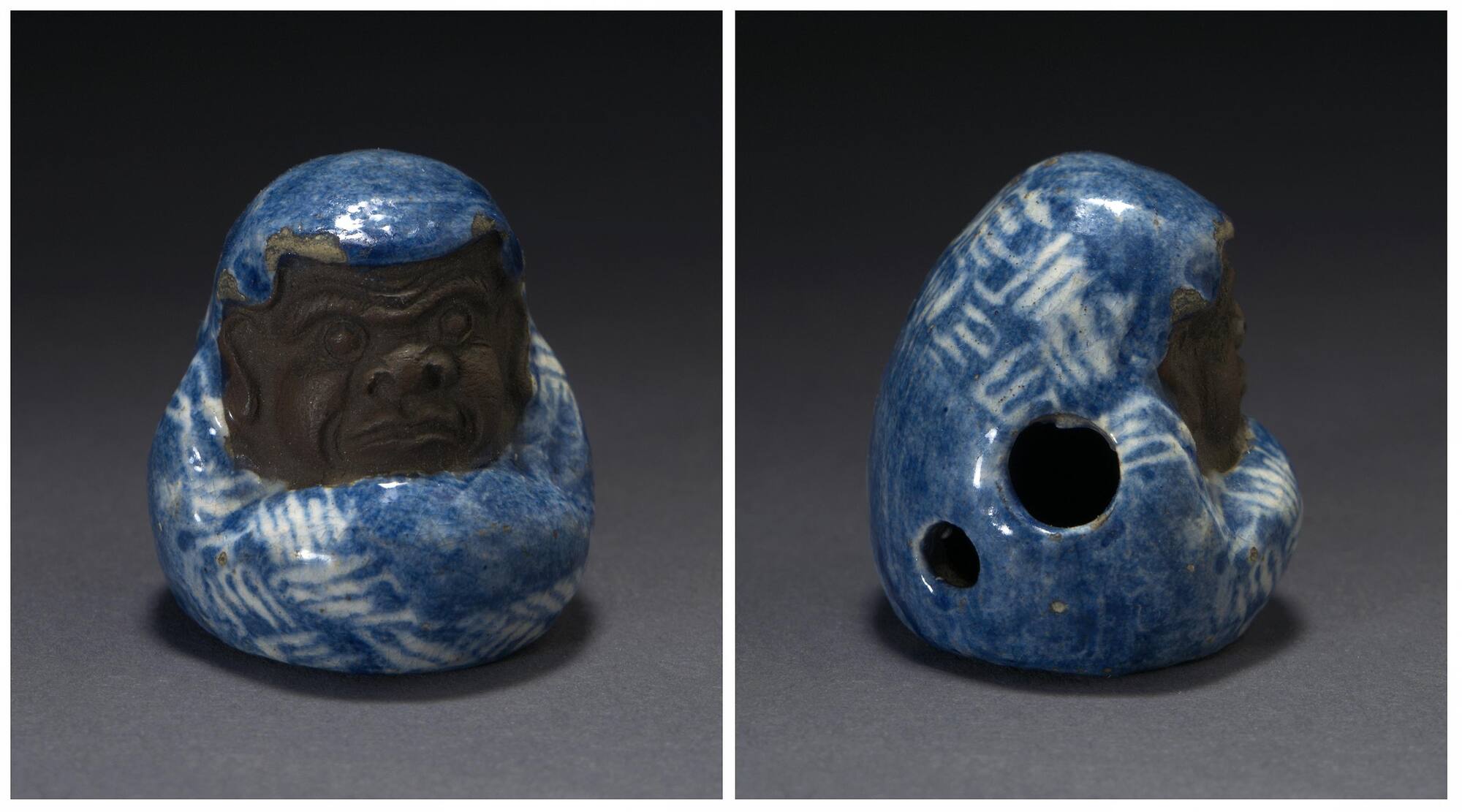
Object Details
Culture
Japanese
Date
19th century
Medium
Dark brown porcelain; Blue and white glazes
Dimensions
1 1/8 x 1 x 1 1/8 inches (2.9 x 2.5 x 2.9 cm)
Credit Line
Gift of Carl A. Kroch, Class of 1935
Object
Number
87.048.100
BRIEF DESCRIPTIONThis is a porcelain netsuke in the form of a Buddhist monk named Daruma, also calle(…)
BRIEF DESCRIPTIONThis is a porcelain netsuke in the form of a Buddhist monk named Daruma, also called Bodhidharma.WHERE WAS IT MADE?This netsuke was made in Japan.HOW WAS IT MADE?Netsuke made from porcelain, like this one, were hand-modeled from a white clay containing kaolin, then glazed and fired in a kiln.HOW WAS IT USED?During the Edo period (1603-1868), the standard attire for a well-dressed Japanese man consisted of a kimono tied with a sash. Because kimonos had no pockets, accessory bags and carrying cases (called sagemono: hanging things) were used to hold personal items such as money, medicines, tobacco and seals (a stamp carved with the owner’s name). Silken cords, attached to the sagemono, were threaded through the kimono sash (obi). A toggle, called a netsuke, was attached to the other end of the cord to prevent it from slipping through the sash. To see a netsuke with an inro—one popular type of sagemono that consisted of small, stacked compartments for holding medicines—search for object number 98.087.006 in the keyword search box.The term netsuke comes from the words “ne”, meaning ‘root’ and “tsuke”, meaning ‘to fasten.’ Early netsuke may have been made from found objects such as pieces of roots, nuts, coral and bone. Over time, netsuke production became more and more varied, refined, and innovative, reaching a high point in the early 19th century. Subjects and decoration of netsuke and sagemono reflected the tastes and aspirations of their owners, often infused with an element of comic irony. As clothing traditions modernized, netsuke came to be collected separately from sagemono, and appreciated as sculptural gems in their own right.WHY DOES IT LOOK LIKE THIS?This netsuke is a representation of Bodhidharma (called Daruma by the Japanese), the founder of Zen Buddhism. Bodhidharma, an Indian monk who traveled to China in the sixth century, is said to have meditated in front of a wall at the Shaolin Temple for nine years before reaching enlightenment. Notice that this figure of Daruma appears to be limb-less. Due to Daruma’s prolonged period of sitting, one legend recounts that his legs withered away. This particular representation of a legless Daruma became a popular children’s toy in Japan. The hollow, papier-mâché toy is weighted so that, even when pushed over, it will right itself. To see a Japanese Zen painting of Daruma, seated in mediation, in the Johnson Museum’s permanent collection, search for object number 79.020.005 in the keyword search box.




